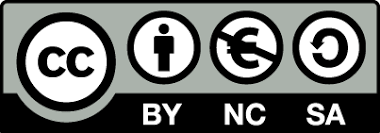บทคัดย่อ
การติดเชื้อไวรัสเดงกี่เป็นปัญหาสาธารณสุขระดับโลก ซึ่งยังไม่มีการรักษาจำเพาะในปัจจุบัน การศึกษาก่อนหน้าพบว่าสารเคมีกลุ่มไครซินและฟลาวาโนนมีคุณสมบัติยับยั้งไวรัสเดงกี่ได้ จากการศึกษานี้พบว่าสารประกอบไครซินที่ผ่านการดัดแปรโครงสร้างจากการเติมหมู่โบรมีน (FV13) และไอโอดีน (FV14) มีประสิทธิภาพยับยั้งการติดเชื้อไวรัสเดงกี่ 1-4 และไวรัสซิก้า ด้วยค่า EC50 ต่อ FV13 ตามลำดับดังนี้ 2.30 ± 1.04, 1.47 ± 0.86, 2.32 ± 1.46, 1.78 ± 0.72, 1.65 ± 0.86 μM; และค่า EC50 ต่อ FV14 ตามลำดับดังนี้ EC50 2.30 ± 0.92, 2.19 ± 0.31, 1.02 ± 0.31, 1.29 ± 0.60, 1.39 ± 0.11 μM. โดยมี CC50 ของ FV13 และ FV14 ต่อเซลล์ LLC/MK2 ตามลำดับดังนี้ 44.28 ± 2.90 μM, 42.51 ± 2.53 μM จากการศึกษากลไกการยับยั้งไวรัส พบว่าน่าจะมีเป้าหมายของยามากกว่าหนึ่งที่โดยที่ค่าการยับยั้งสูงสุดพบเมื่อให้ยาหลังจากการติดเชื้อในระยะเริ่มต้น การศึกษาเพิ่มเติมทางคอมพิวเตอร์เชื่อว่าเป้าหมายหนึ่งของยาน่าจะเป็นโปรตีนเอนเวลอปของไวรัสและได้ทำการคำนวณออกแบบโครงสร้างสารเคมีใหม่ที่มีประสิทธิภาพการจับกับโปรตีนได้ดีกว่าเดิม ผู้วิจัยสร้างระเบียบวิธีฟามาโคฟอร์จากรูปแบบการเข้าจับกันของโปรตีนเอนเวลอปกับตัวยับยั้งฟลาวาโนนด้วยวิธีโมเลคิวลาร์ไดนามิกซิมมูเลชั่น หลังจากนั้น ทำการทดสอบคัดกรองสารประกอบจำนวนมากจากฐานข้อมูลยาหลายแหล่งโดยใช้โปรแกรมลิแกนสเกาต์ โมเลคิวลาร์ดอกกิ้ง และโมเลคิวลาร์ไดนามิกซิมมูเลชั่น สารประกอบที่มีค่าการยับยั้งสูงสุดได้รับการทดสอบยืนยันด้วยการทดลอง นอกจากนี้ ผู้วิจัยได้สังเคราะห์ฟลาวาโนนเพิ่มเติมอีกสองชนิด คือ ไดโบรโมพิโนเซมบริน และไดโบรโมพินอสโทรบิน ที่มีค่าการยับยั้งไวรัสเดงกี่ชนิดที่สองอยู่ที่ EC50 2.06 ± 0.75 และ 5.86 ± 0.51 μM และค่าการเป็นพิษต่อเซลล์อยู่ที่ CC50s 67.21 ± 0.97 และ >100 μM ตามลำดับ ฟลาวาโนนละลายน้ำได้ดีกว่าฟลาโวนทำให้เหมาะสมต่อการทดสอบกับสัตว์ทดลองต่อไป การศึกษาทางคอมพิวเตอร์พบว่าเป้าหมายของยากลุ่มนี้อาจเป็นโปรตีนเมทิลทรานสเฟอเรสของไวรัส จากการที่ฟลาโวนและฟลาวาโนนยับยั้งไวรัสที่การสร้างโปรตีนและการเพิ่มจำนวนไวรัสโดยมีหลายเป้าหมายที่เป็นไปได้ ผู้วิจัยจึงสังเคราะห์สารประกอบฟลาโวนที่เพิ่มหมู่อัลไคน์ที่ปลายไฮดรอกซีของวงแหวนบี เรียกว่า อัลไคน์แท็กเอพิจินิน อัลไคน์ทำหน้าที่เป็นแท็กเพื่อทำปฏิกิริยาไซโคลแอดดิชั่นเพื่อให้สังเกตเห็นได้ใต้กล้องจุลทรรศน์ ผลการทดลอง พบว่าสารประกอบอยู่ที่บริเวณรอบนิวเคลียสในช่วง 1-6 ชั่วโมงแรกหลังการติดเชื้อและย้ายไปอยู่ในเวสิเคิลในช่วง 24-48 ชั่วโมงหลัง มีการศึกษาก่อนหน้ารายงานว่าสารประกอบเอพิจินินจับกับโปรตีนของไรโบโซม S9 ผู้วิจัยจึงนำโปรตีนชนิดนี้มาทดสอบกับเอพิจินินและอัลไคน์เอพิจินินด้วยวิธีโมเลคิวลาร์ดอกกิ้งพบว่ามีการจับกับโปรตีนของไรโบโซม S9 ที่ตำแหน่งและพลังงานใกล้เคียงกัน การจับกันนี้อาจมีผลกับการยับยั้งการเดินทางของโปรตีนของไวรัสตามปกติได้
บทคัดย่อ
Dengue virus infection is a global threat for which no specific treatment has not been established. Previous reports suggested chrysin and flavanone derivatives were potential flaviviral inhibitors. Here, we reported two halogenated chrysins, abbreviated FV13 and FV14, were highly potent against DENV1-4 and ZIKV infectivities with the FV13 EC50 values of 2.30 ± 1.04, 1.47 ± 0.86, 2.32 ± 1.46, 1.78 ± 0.72 and 1.65 ± 0.86 μM; and FV14 EC50 values of 2.30 ± 0.92, 2.19 ± 0.31, 1.02 ± 0.31, 1.29 ± 0.60 and 1.39 ± 0.11 μM, respectively. The CC50s to LLC/MK2 of FV13 and FV14 were 44.28 ± 2.90 μM, 42.51 ± 2.53 μM, respectively. Mechanism of drug action studies suggested multiple targets but maximal efficiency was achieved with early post infection treatment. Computational study suggested the target at viral envelope and further optimized the pharmacophore to the stronger binding affinity. Pharmacophore models were generated using trajectories obtained by molecular dynamics (MD) simulations of the dengue envelope E protein complexed with the active inhibitor, flavanone (FN5Y). Subsequently, compounds presented in various drug databases were screened using the LigandScout 4.2 program, molecular docking, followed by extensive MD simulations. The highest-ranked compound from this procedure was then synthesized and tested on its inhibitory efficiency by experimental assays. Moreover, we synthesized two halogenated flavanones, dibromopinocembrin and dibromopinostrobin, and tested against dengue serotype 2 at the EC50s of 2.06 ± 0.75 and 5.86 ± 0.51 μM with at the CC50s of 67.21 ± 0.97 and >100 μM, respectively. Flavanones are more aqueous soluble than flavones therefore they are more suitable for further in vivo experiments. Computational studies suggested the potential target be likely the NS5 methyltransferase. Since flavones and flavanones inhibited viral translation and replication potentially with multiple targets. A flavone was chosen for alkyne addition to the B-ring, resulting in an alkyne-tagged apigenin. The alkyne serves as a chemical tag for the alkyne-azide cycloaddition reaction for subcellular visualization. The compound located at the perinuclear region at 1 and 6 h after infection corresponded to a previous report that apigenin-fixed bead pulled down a ribosomal protein S9. Interestingly, the compound signal started shifting to vesicle-like structures at 6 h and accumulated 24 and 48 h after infection. Moreover, the drug treatment in dengue-infected cells showed that the compound restricted the viral protein inside the vesicles, especially at 48 h, where the dengue envelope proteins spread throughout the cells. The alkyne-tagged apigenin showed stronger efficacies than the originals at the EC50 of 2.36 ± 0.22, and 10.55 ± 3.37 μM, respectively. The cytotoxicities were similar at the CC50 of 70.34 ± 11.79, and 82.82 ± 11.68 μM, respectively. Therefore, the newly synthesized, alkyne-tagged flavone did not interfere with the anti-dengue efficacies and was found in cytoplasmic vesicles inside the cells targeting a previously reported ribosomal protein S9 protein. Molecular docking predicted two RPS9-binding sites of both apigenins with similar affinities. The interaction should attenuate dengue productivity by interfering with viral translation and suppressing the viral proteins from trafficking to the cell surface.


